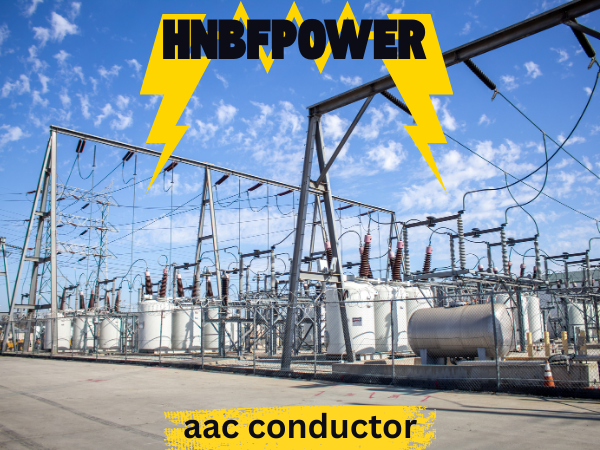AAC (All Aluminum Conductor) is widely used in electrical transmission for its lightweight, corrosion resistance, and high conductivity. HNBFpower specializes in providing high-quality AAC conductors suitable for overhead power lines, ensuring safe and efficient electricity distribution. Understanding the deployment process, specifications, characteristics, and advantages can help utility companies and contractors make informed decisions.
Deployment Process of AAC Conductor
1. Planning and Route Survey
Before deploying AAC conductors, a detailed survey of the transmission line route is essential. This involves identifying pole locations, calculating conductor length, and checking environmental factors like wind, trees, and terrain. Proper planning ensures minimal installation issues and safe operations.
2. Preparation of Equipment
Deployment requires specialized equipment, such as tensioners, pulleys, winches, and reel stands. Conductors are supplied in large reels and must be carefully handled to avoid damage. Workers should wear safety gear, including gloves and helmets, during handling.
3. Stringing the Conductor
The conductor is pulled from the reel and strung along the poles using pulleys and tensioners. Care is taken to maintain proper sag according to engineering standards. Excessive tension can damage the conductor, while insufficient tension can cause line sagging.
4. Sagging and Tension Adjustment
Sagging ensures that the conductor has the correct vertical and horizontal clearance from the ground and structures. This step is critical for safety and long-term reliability. Engineers use specialized tools to measure sag and adjust tension accurately.
5. Securing and Clamping
After proper sagging, conductors are clamped securely to insulators on poles. Clamps and fittings must be corrosion-resistant and designed for AAC conductors to prevent slippage or wear.
6. Inspection and Testing
Finally, the line is inspected for alignment, sag, and secure connections. Electrical testing may be conducted to ensure continuity and detect faults before energizing the line.
Specifications of AAC Conductor
-
Material: 100% pure aluminum
-
Stranding: Multiple aluminum strands for flexibility
-
Size Range: Typically from 6 mm² to 500 mm²
-
Voltage Rating: Suitable for low, medium, and high-voltage transmission
-
Temperature Rating: Can withstand high temperatures without significant sag
Characteristics of AAC Conductor
-
Lightweight and easy to handle
-
Excellent corrosion resistance
-
High electrical conductivity
-
Durable under various environmental conditions
-
Simple installation process compared to other conductors
Advantages of Using AAC Conductor
-
Cost-Effective: Pure aluminum is cheaper than composite or alloy alternatives.
-
Low Maintenance: Resistant to rust and environmental degradation.
-
Efficient Energy Transmission: High conductivity ensures minimal power loss.
-
Easy Installation: Lightweight design reduces labor and equipment costs.
-
Environmentally Friendly: Aluminum is recyclable and safe for overhead applications.
How to Buy AAC Conductor from HNBFpower
-
Contact HNBFpower: Reach out via phone or email for product inquiries.
-
Specify Requirements: Provide conductor size, voltage rating, and length needed.
-
Request a Quote: HNBFpower offers competitive pricing for bulk orders.
-
Place the Order: Confirm payment and delivery schedule.
-
Delivery and Support: Conductors are shipped safely with technical guidance for installation if needed.
Conclusion
Deploying AAC conductors is a straightforward process when following proper planning and installation guidelines. With HNBFpower’s high-quality AAC conductors, you get reliable, durable, and efficient solutions for overhead electrical transmission. From specifications to advantages and purchasing guidance, HNBFpower ensures you get the best value and performance.





